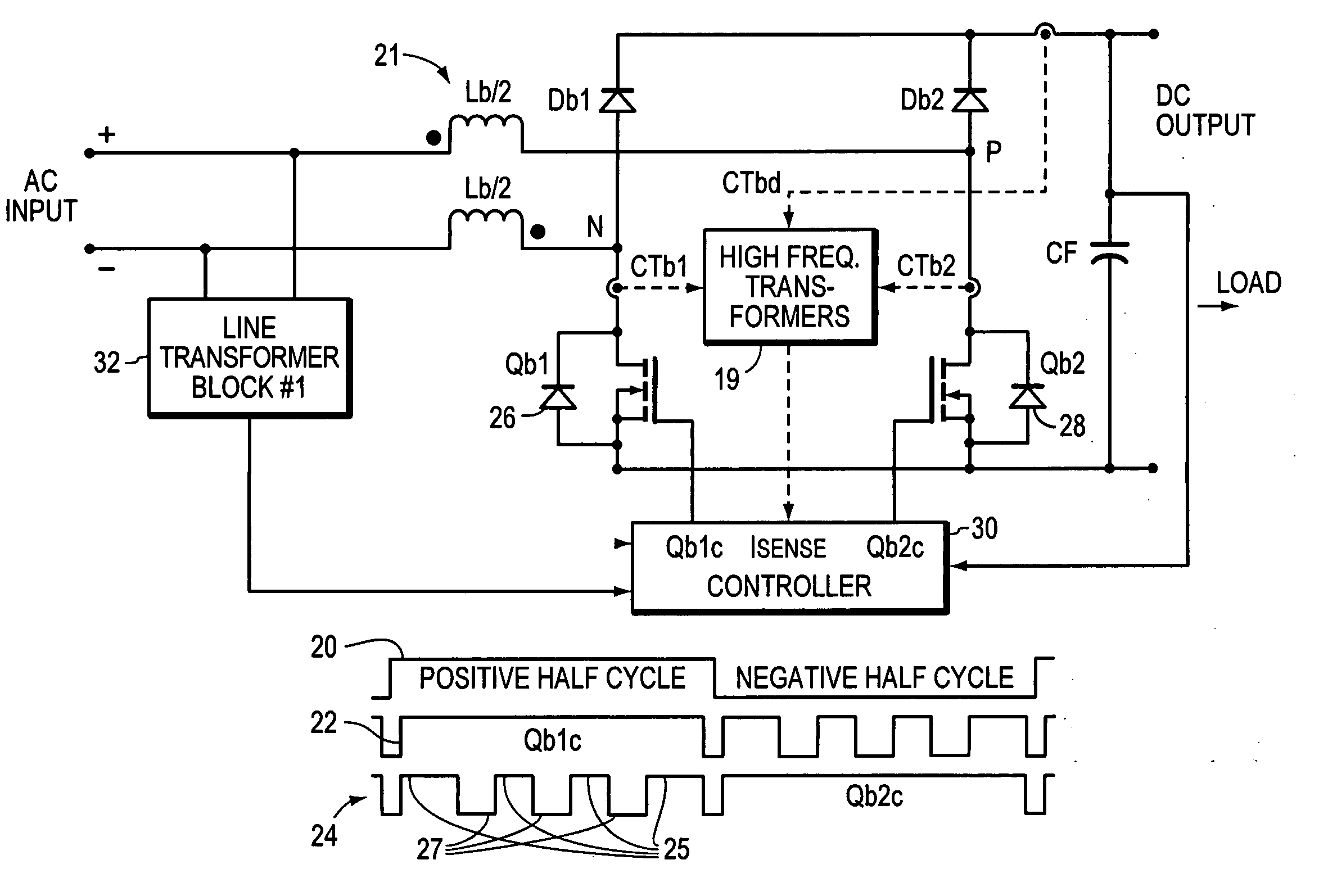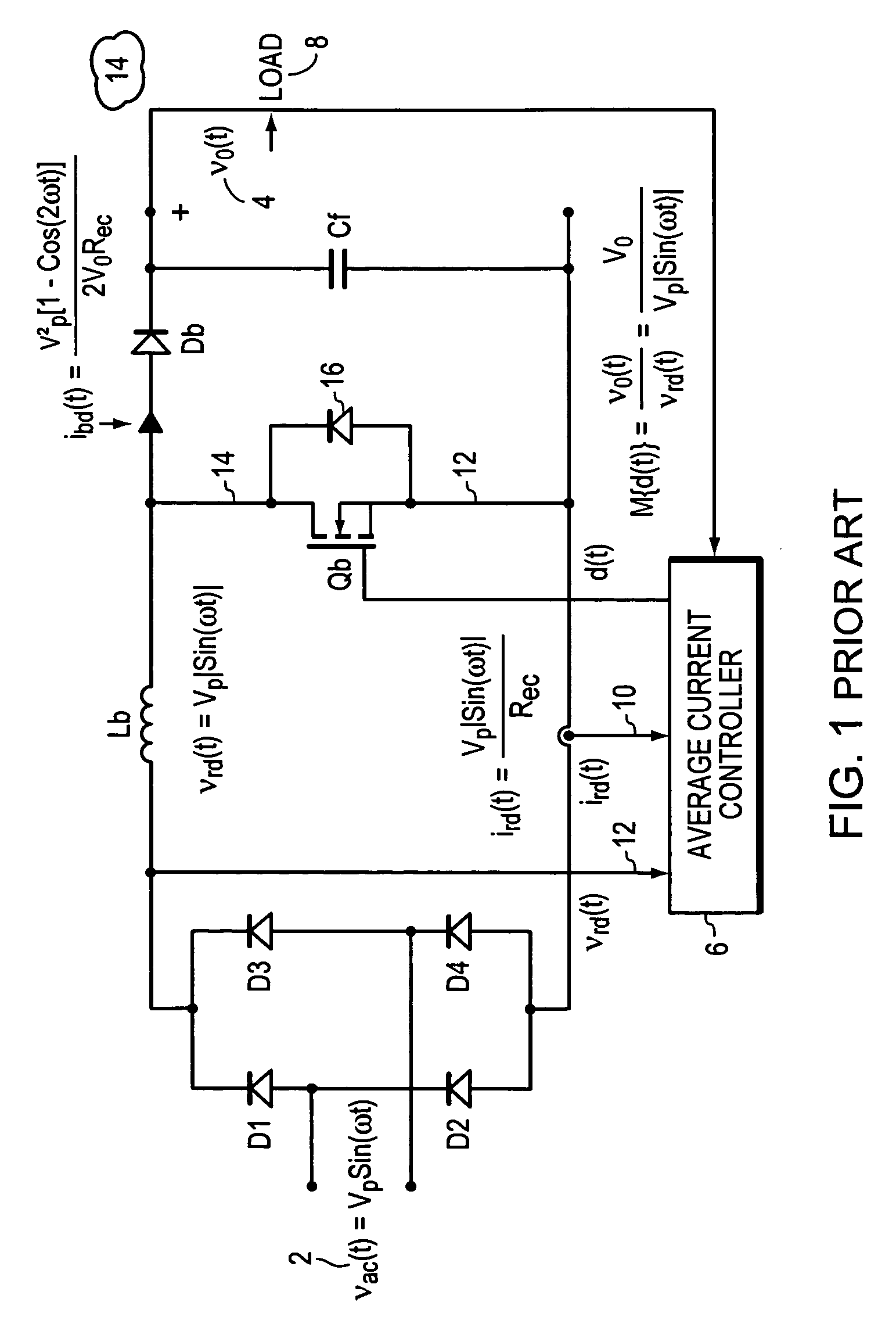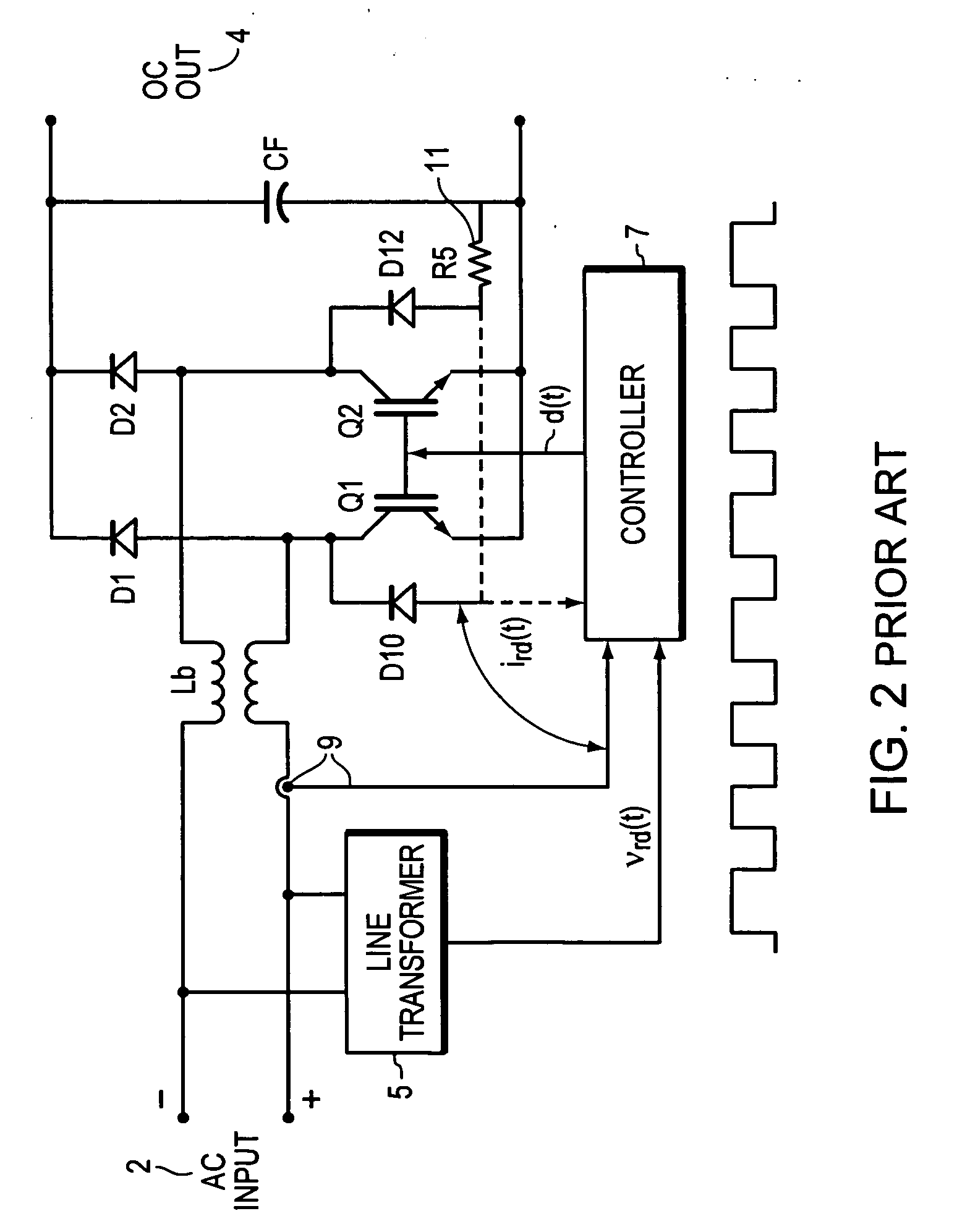Vrms and rectified current sense full-bridge synchronous-rectification integrated with PFC
a synchronous rectifier and current sensing technology, applied in the direction of dc-ac conversion without reversal, conversion with intermediate conversion to dc, energy industry, etc., can solve the problems of loss, loss, and physical bulk of 50/60 hz line voltage sensing transformers, and many of the advantages of this patent will be unfulfilled
- Summary
- Abstract
- Description
- Claims
- Application Information
AI Technical Summary
Benefits of technology
Problems solved by technology
Method used
Image
Examples
Embodiment Construction
[0035] Prior art FIG. 2 is an improvement over FIG. 1, and FIG. 3 illustrates an inventive circuit that is an improvement over FIG. 2. In FIG. 3 the current sensing is via high frequency transformers 19. The load current, and the current through the return switches, Qb1 and Qb2 are sensed with the high frequency transformers. The diodes D2 and D4 of FIG. 1 are replaced by Qb1, and Qb2, respectively, and the timing charts shown below are implemented by a controller 30. Also, the boost inductor is split in into two Lb / 2 sections 21 with mutual inductance between the two inductors Lb. These two inductors share a common magnetic link with the “dots”21a indicating the winding polarities. During a positive power cycle 20, node P is positive, Qb1 is driven on 22 synchronously with the start of the positive AC input cycle, to provide a return path for current from point P through Lb / 2, Qb2 and / or Db2 and any load. During this positive cycle, Qb2 acts as a boost switch (to charge and dischar...
PUM
 Login to View More
Login to View More Abstract
Description
Claims
Application Information
 Login to View More
Login to View More - R&D
- Intellectual Property
- Life Sciences
- Materials
- Tech Scout
- Unparalleled Data Quality
- Higher Quality Content
- 60% Fewer Hallucinations
Browse by: Latest US Patents, China's latest patents, Technical Efficacy Thesaurus, Application Domain, Technology Topic, Popular Technical Reports.
© 2025 PatSnap. All rights reserved.Legal|Privacy policy|Modern Slavery Act Transparency Statement|Sitemap|About US| Contact US: help@patsnap.com



